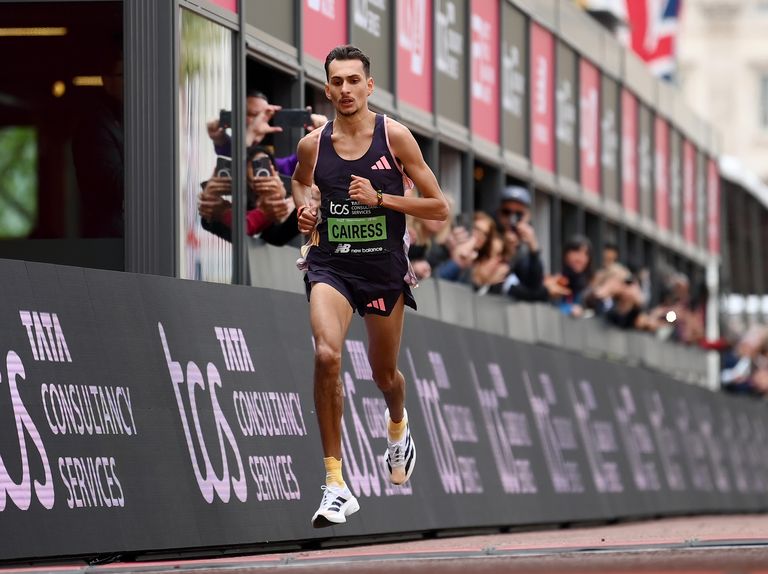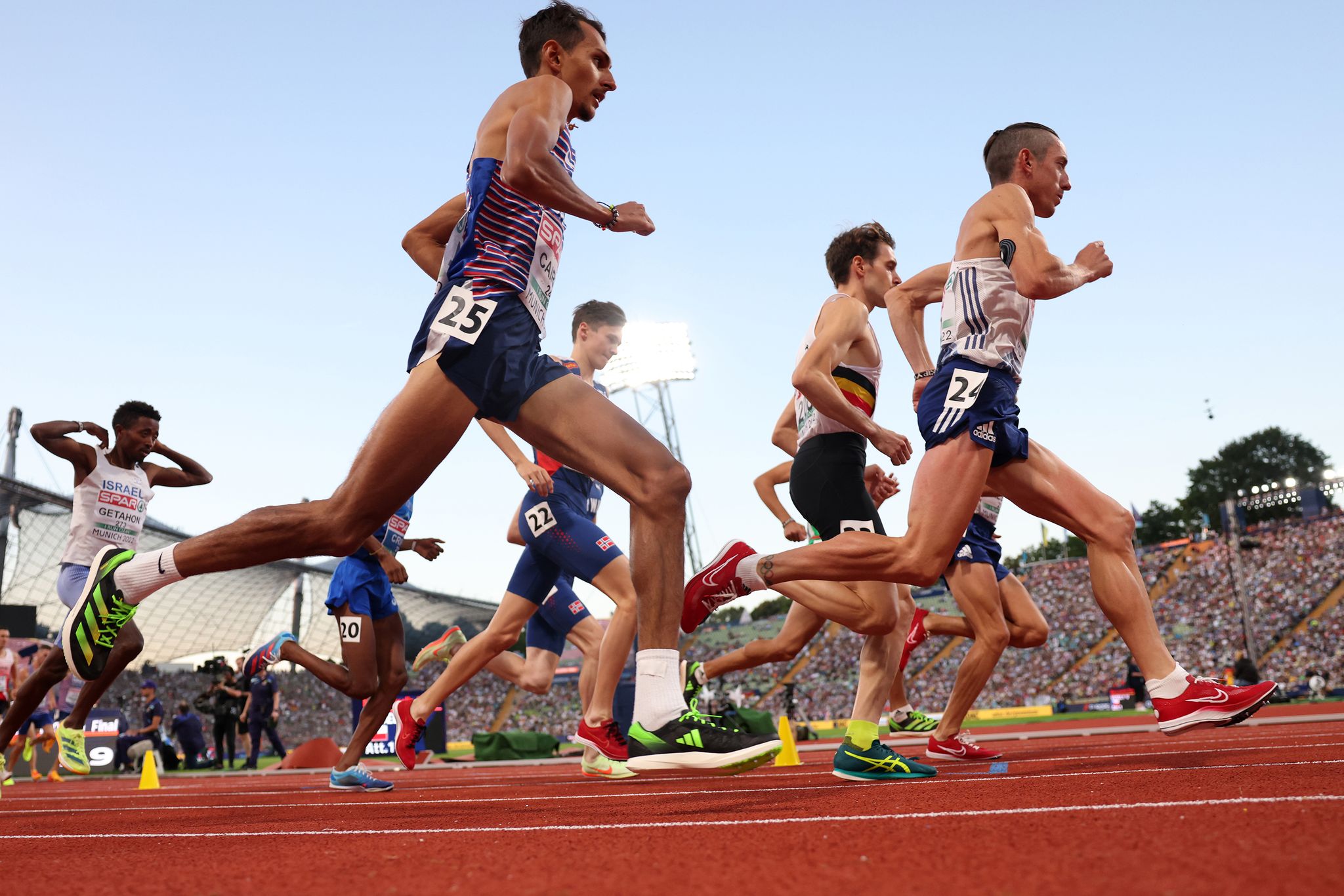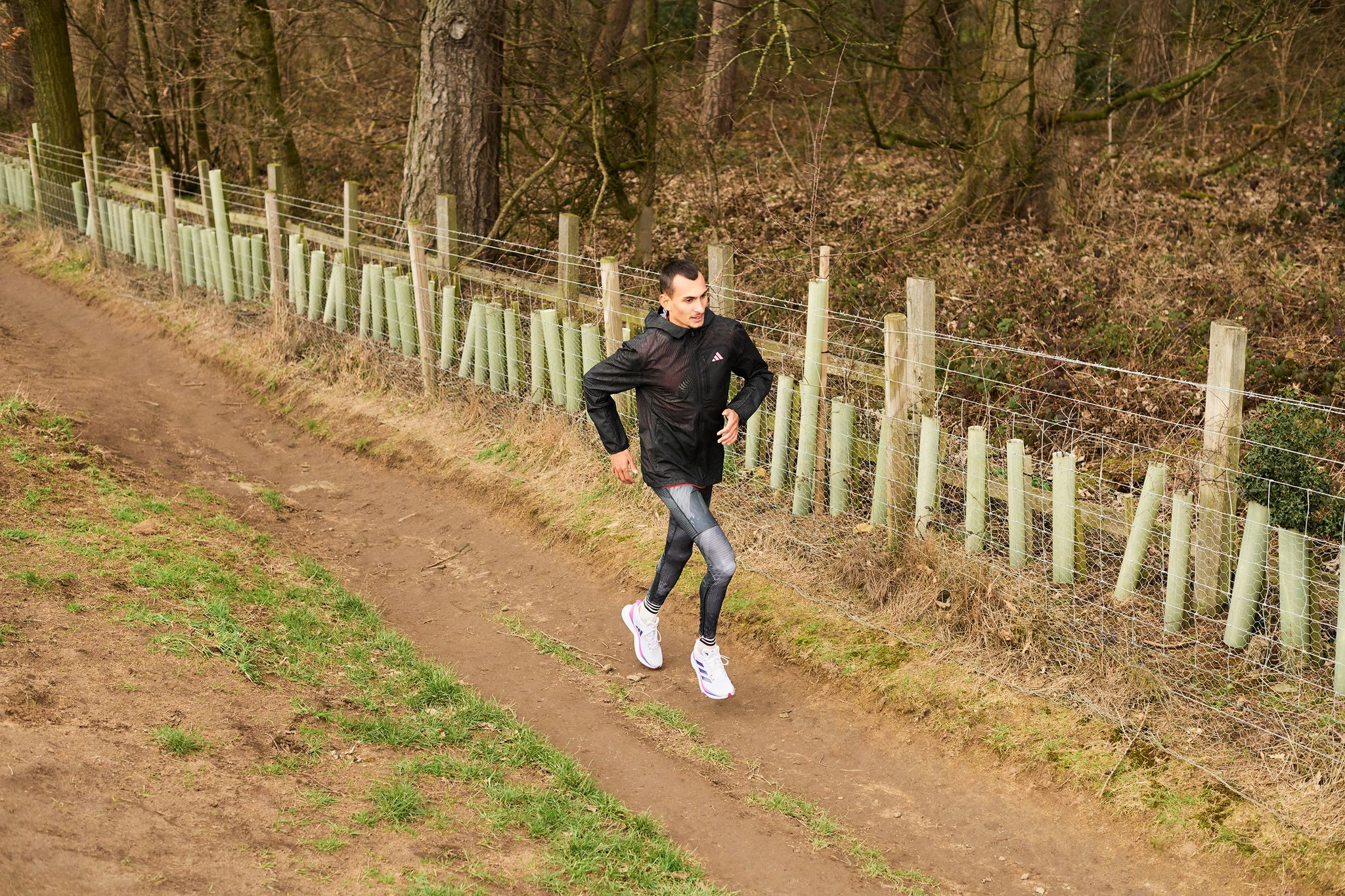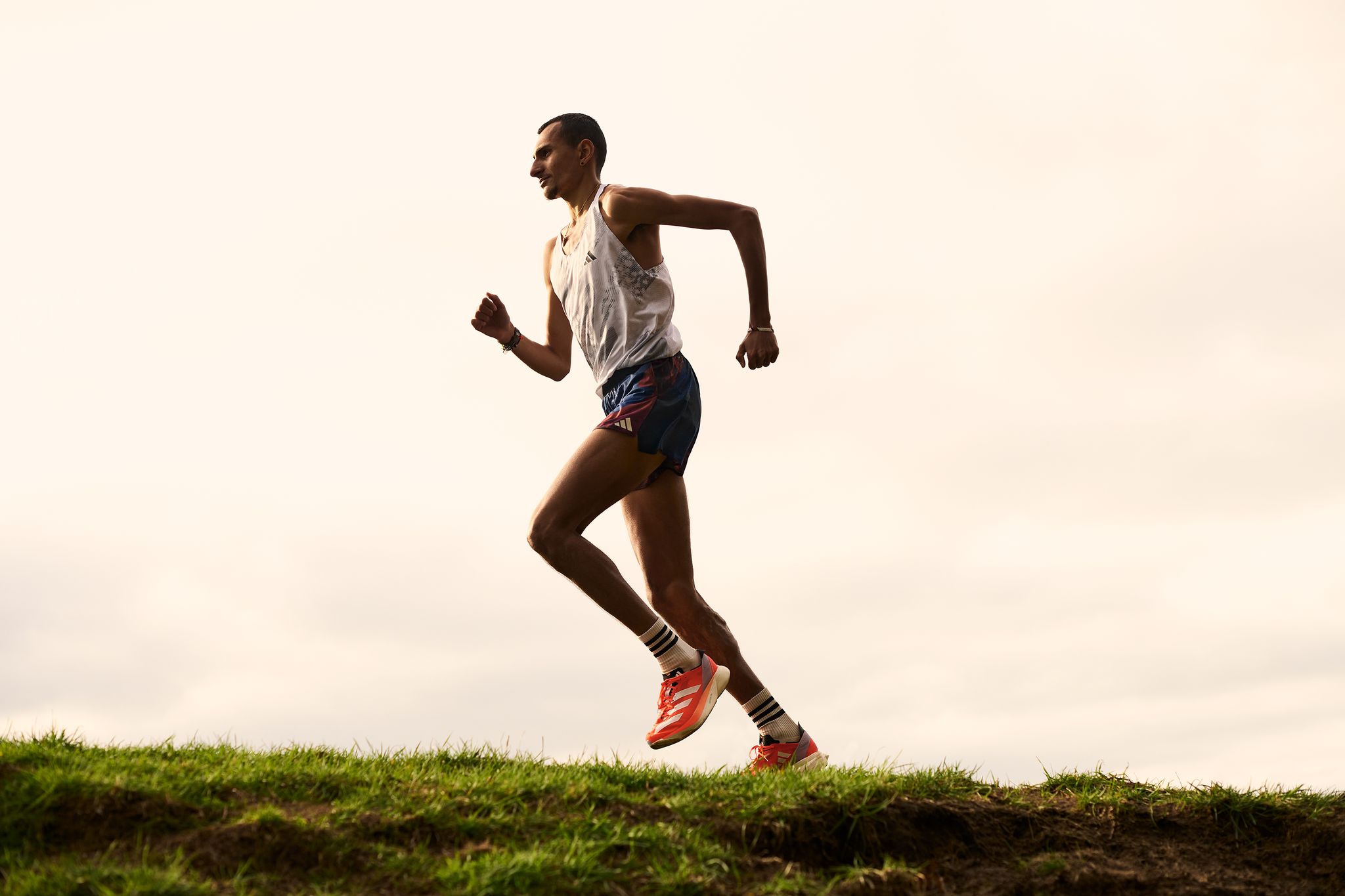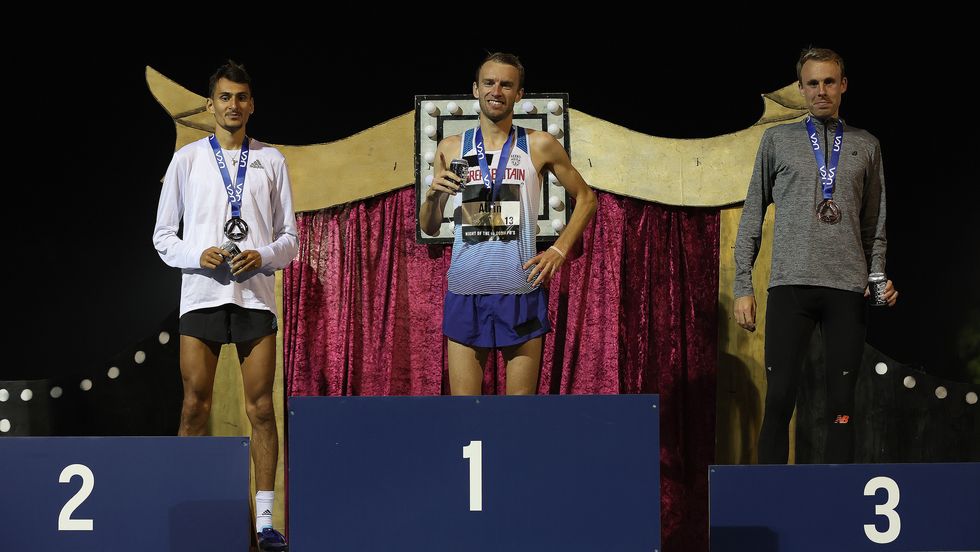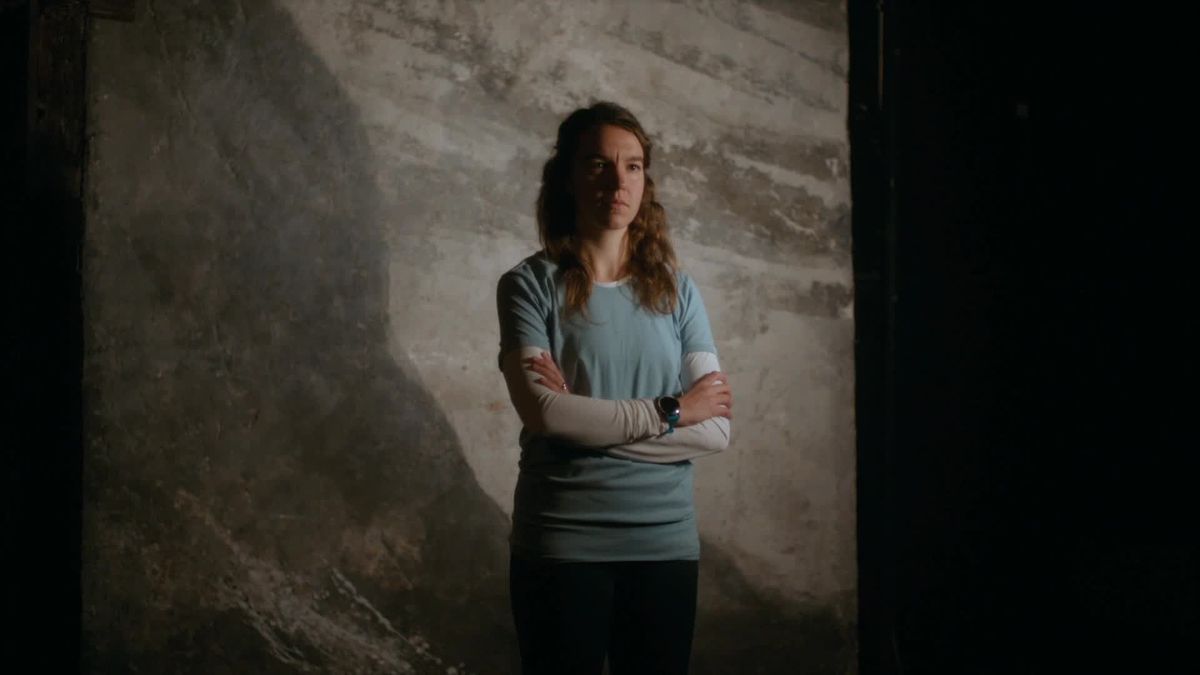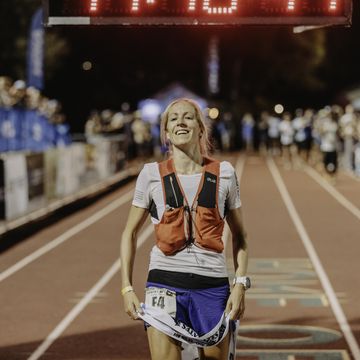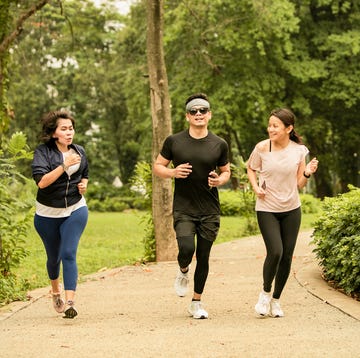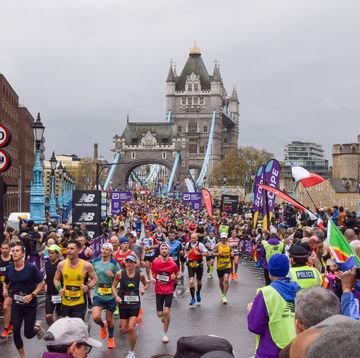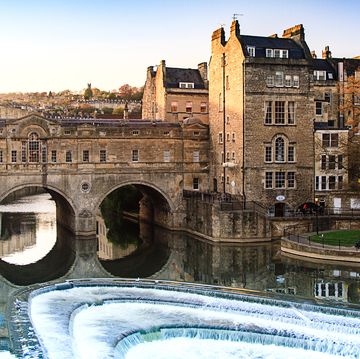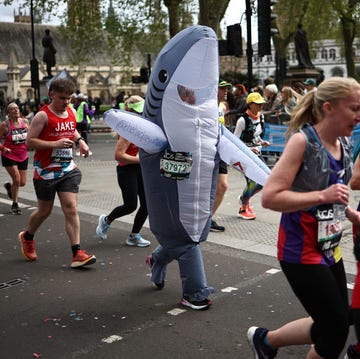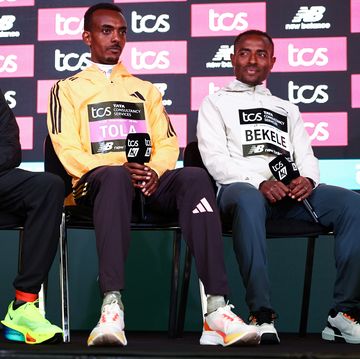Over the past few years, Emile Cairess has cemented himself as a running force to be reckoned with. This year, he stormed to prominence when he finished third at the 2024 London Marathon in a brilliant time of 2:06:46, making him the second-fastest British marathoner ever and earning him a coveted place to run the marathon for Team GB at the 2024 Olympic Games in Paris.
Even at the 2023 London Marathon – his marathon debut – Cairess was the first Brit to cross the finish line, his impressive result of 2:08:07 placing him sixth overall and also meeting the Olympic qualifying mark.
But he doesn't just excel at the marathon. In March 2023, just one month before his outstanding first marathon in London, Cairess broke the long-standing British 10-mile record – and in February this year he ran a sublime half marathon PB of 60:01 in Napoli, pushing him up to third on the UK all-time rankings for 13.1 miles. Preceding this was a stellar 2022 that saw the Yorkshireman tie Mo Farah’s British 10K road record, set five personal bests from 3000m to the half marathon and take silver at the European Cross Country Championships in Turin.
Cairess approaches his running with a refreshing simplicity and genuine love of not just the sport, but the pure act itself and how it connects us to nature – and he shows no signs of slowing down. The 26-year-old talent sat down with RW last year to share his passion, inspiration and goals for the future as time ticked by on his trusty Casio.
RUNNER’S WORLD: The inside intel says it was your mum who inspired you to start running?
EMILE CAIRESS: ‘Yes, it’s true. She ran every day to keep fit and, naturally, seeing her go out, I wanted to tag along. So I just started doing that. At first, I was holding her back, then over time I was able to finish a run with her and I just carried on from there. I started when I was quite young, probably about four, I’d say. So it was a struggle for me to make it around the block, but my mum was happy to let her run go out the window so I could tag along.’
RW: And by your teens, you had to make a decision between football and running?
EC: ‘Yeah, it was quite a big thing for me to quit football because it’s a big passion and I really love it, but the level I was reaching in running compared with the level I was reaching in football, together with how much I enjoyed running, it just didn’t make sense for me to carry on with football. It wasn’t a high standard, so some of the tackles were dangerous and you’d see people breaking their legs.’
RW: You went to a school – Bradford Grammar – with real running pedigree. Was that inspiring for you?
EC: ‘There have been some top athletes there in the past – the Brownlees, Richard Nerurkar, the swimmer Adrian Moorhouse. Although the Cross Country Club wasn’t the same as when those guys were attending because a few key figures, such as Tony Kingham, had left. But it was a nice feeling knowing that they had gone down the same path.’
RW: Was it always your plan to be an international athlete, or has your trajectory surprised you?
EC: ‘A bit of both. I wouldn’t say I thought I’d definitely be an international athlete. I did aspire to it, I knew it was something I really wanted and I worked hard towards it, but I can’t say at 14 I was telling everyone I was gonna do it.’
RW: You’ve worked with some amazing coaches, including Alan Storey, who trained Mo Farah. What’s it been like learning under him, and your new coach, Renato Canova?
EC: ‘It’s invaluable having people like Alan and Renato to guide you. Because they’ve guided so many athletes to a level that I was aspiring to reach... and I’m still aspiring to get to. They have the blueprint of how to get there and you can’t put enough value on that. Without those two, I wouldn’t be in the position I’m in now.’
RW: You spent a few years training yourself. Do you feel you were getting anything seriously wrong in that time?
EC: ‘I don’t think I was getting too much wrong because I was making good progress. Obviously, I was making little mistakes, but I think having a coach with the blueprint expedites the process. It’s less trial and error and more a definite, “If you do X, then you’ll get Y.” It was something I really enjoyed and I think it’s beneficial in that you learn the purpose of training. That helps, even when you’re being coached by someone else. When they give you your session, you understand more about how to do it effectively. So it was a really useful learning process for me.’
RW: What training session do you value the most?
EC: ‘Some type of tempo running, or some people call it threshold running. I think they’re the sessions that are most beneficial for events from 5K to the marathon. If you have a good threshold, you’re really setting yourself up for success. You can always get into more specific kinds of training afterwards.’
RW: What will your threshold or tempo sessions look like in a marathon build-up?
EC: ‘The London Marathon this April will be my first 26.2, so I’m not that experienced, but I think something like 3x5K or 4x5K. You can also look to run moderate sections in between instead of taking a rest. I don’t think the specifics of the session are so important – it’s more getting the right amount of time or volume at a certain intensity. For me, 45 minutes to an hour at threshold in a session is the standard.’
RW: Equalling Mo Farah’s 10K road record caught everyone’s attention. How did it feel? Presumably he was someone you looked up to when you were young?
EC: ‘With Mo Farah, when I was younger and he was doing the 2012 Olympics, I was at such a different level that it felt like he was almost doing a different sport. I think most young runners maybe take inspiration from people, say, a year above them, or two years above them, which is more relatable. So while it was cool to see him on telly, it was more someone winning the Yorkshire cross-country that I was aspiring to be like. But equalling his record was a really cool achievement for me. To think that I was the fastest British runner over 10K on the road... if I’d told myself that when I was younger, I would’ve been shocked. But I feel Mo had kindly left the record there for the taking – it’s almost a minute slower than his time on the track, so it’s not quite the same level. But the way I was progressing and running only nine seconds slower on the track the summer before over 10,000m, it was definitely one of my goals for that period and it was really nice to do it.’
RW: Talking of records, what made you target Richard Nerurkar’s 30-year-old British 10-mile record? And what does it mean to have broken it?
EC: ‘Having gone to the same school as Richard makes a nice story, and eventually I’d like to set all the British road records. It was a good time to go for 10 miles, as it fitted with my London Marathon training. I’m really thankful to the guys at SportsShoes, Podium 5K and Adidas for setting up the opportunity for me to break it at Barrowford, in Lancashire, on the Podium circuit.
It all went pretty much to plan. I felt good in the early stages with the pacemakers, then the middle part was mentally tough, being on my own with quite a long way still to go. That was the most difficult part of the race, then on the last few laps I could sort of smell the finish and I knew if I could maintain the pace I’d be under the record. So it got easier towards the end rather than harder. It was a good stepping stone towards the London Marathon and shows that my training has been going well – you can train well but it doesn’t always translate to racing, so it’s nice when it does. Obviously 10 miles is not one of the main race distances and I think Mo Farah and Callum Hawkins have probably split faster for 10 miles, so trying to get that half marathon record is definitely on my agenda for this year. I think you have to do everything in athletics step by step, but it’s also a real high point in a running career.’
RW: So the ambition is to hold all British road records?
EC: ‘That’s definitely something I’d like to do and I think they’re all achievable. Whether I do achieve them is a completely different story, but I think, as a runner, you always have to set yourself goals and then that motivates you to try your best to reach them. Without goals, I think it’s difficult to achieve big things. I don’t think anyone just stumbles upon stuff like that.’
RW: London will be your first marathon. Have you got clear ambitions, or is it more about trying to get things right on the day and seeing what happens?
EC: ‘My coach wants me to go conservatively and take it easy in the first half. As it’s the first one, he just wants me to have a good experience, so afterwards I can view the marathon in a positive way and not be fearful of it, which might happen if I go off really quick and struggle in the second half. If I can run a negative split, I’ll be happy. I’m not looking for any particular time or position, just a good, positive experience. Then later in the year, maybe at Valencia, I’ll try to run a really fast time and attack it.’
RW: Phil Sesemann has certainly done very well at London over the past couple of years. Is it true you train together?
EC: ‘Phil and I have trained a lot together since 2018/19. We’re clubmates and he lives just down the road from me, so it’s nice to see him doing so well at the marathon, especially as I feel like I encouraged him to move into it.’
RW: It looks like you’re wearing a Casio watch in our shoot... is that your tech of choice?
EC: ‘That particular Casio is actually my girlfriend’s, but she bought me a different one because she was fed up with me wearing hers! I think just wearing a stopwatch takes some of the pressure off. A lot of people get too tied up in the exact pace of an easy run, a steady run – when all that really matters is that it’s easy or steady. I have my routes and I know how far they are, so I do know my pace in the end, but while I’m running I’ve not really got any idea of the pace. I think it’s good for you mentally to be a bit disengaged sometimes, rather than feeling stressed about things that don’t need to be stressed about.’
RW: You’re a great cross-country runner and Yorkshire is a beautiful county to run in. Do you have favourite spots?
EC: ‘I love running in the woods and on the Leeds and Liverpool canal, the Meanwood Valley Trail and by Eccup Reservoir. My mum lives in Bradford and there are some lovely runs near her: up on Baildon Moor and the canal in Saltaire. I really do love running, and running in those places and enjoying nature, it’s a feeling you can’t beat.’
RW: How much of your running is on tarmac and how much is on softer surfaces?
EC: ‘Pretty much all of it is off-road. A couple of sessions a week have to be on the track, or maybe on the road, but other than that, I try to always run on soft surfaces. I think it’s a bit better for you in terms of injuries as it reduces the force going through your legs, but it’s also more enjoyable to be running in a nice place. I’ve never found running on busy roads or even country lanes enjoyable – it doesn’t feel as nice as when you’re surrounded by nature.
I think everyone would benefit from running more off-road, physically and mentally. They would enjoy their running a lot more if they just sought out a route that was in nature. They would have a more pleasant experience and it would make that part of their day more enjoyable. At the end of the day, the main reasons people run are to enjoy it and for health, and I think running in nature fits into that really well.’
RW: What lessons did you learn while training in Kenya?
EC: ‘I’ve been over there in January for the past three years and I think there’s a multitude of benefits. One is that the weather is really bad in Yorkshire at that time of year, so you avoid the ice, the wind and the cold, while the climate is perfect over there. Then you have the benefits of altitude and being immersed in the training environment that produces some of the best runners in the world. It’s really inspiring and humbling when you see how they achieve such success through a minimalistic lifestyle. In Britain, so many people get caught up in the minutiae of training and all the technology and specific food... they overcomplicate things. In Kenya, life is really simple. Many Brits could learn a lot from Kenyan people’s attitude: just enjoy running and work really hard; do the basics such as sleeping and recovering well and that will lead to good performances.’
RW: Are you on a strict diet? Or is food more about fuelling your miles?
EC: ‘It’s more that I need to eat as much as possible. Because I’m doing so much training, I need to eat a lot to fuel it. It’s simple: if you don’t eat enough, you’re not going to have enough energy to train properly. I think people get caught up in weight and body fat, etc. When you’re training properly, I think you just need to eat as much as you can. Once you’ve ticked the box of eating enough, then maybe look at the specifics of what you’re eating, but I think the main thing to focus on is eating enough. Some people will think they’re doing the right thing by having salad for tea, when actually a plate of fish and chips would be better for them if they’ve run 20 miles that day. Although obviously, it’s even better if they have rice and chicken and broccoli...’
RW: What’s your take on strength and conditioning work?
EC: ‘It depends on the individual – some people are naturally stronger, but I think it’s really important for someone like me. In running, your performance is determined by your energetic system and your biomechanical function. Like my coach says, ‘There’s no point having a Ferrari engine on tractor tyres.’ The S&C is giving yourself the Ferrari tyres, that’s the metaphor I like. If your legs are powerful and can produce a lot of force, it’s easier to run faster. I think that comes more naturally to some people than others, so if you tend to feel like your breathing is okay but you just can’t run any faster, then the gym will probably be beneficial. Then there’s also injury prevention, but I tend to be quite lucky with that regardless of whether I work in the gym or not. For me, being able to run faster is the biggest benefit I get from it.’
RW: What does a typical S&C workout look like for you?
EC: ‘I listened to a Richard Blagrove podcast. He’s one of the foremost people in S&C and he said if you do a step-up, a hinge and a push exercise, then you’re 90% of the way there. So if you’re doing a squat, a Romanian deadlift and a step-up, all with pretty heavy weights and maybe 3x8 reps, it might not be the perfect routine, but you gain most of the benefits. After that, you can tailor it, maybe doing some calf work or plyometrics, but I keep it quite simple. I do one circuit session a week – squat jumps, jumping lunges and high knees – for muscular endurance. I’ve found that has been beneficial for me, especially in cross-country, where your legs do tend to start getting tired.’
RW: Do you have go-to shoes for racing different distances, and do you train in those?
EC: ‘I’d definitely advise having different shoes for racing and training. Well, certainly for racing and easy running. Maybe your racing shoes can also be what you run harder sessions in, but definitely don’t race in your easy-run shoes. I do easy runs in my Adidas Boston 10s. They’ve got a big stack height, which means you don’t tend to feel little stones when you’re in the forest. It’s an unintended benefit because they’re supposed to be for steady and tempo runs on the road rather than easy runs on trails, but they feel great. Then, for most races, I’ve worn the Adidas Takumi Sen. It’s a stripped-down version of the Adios Pro 3. The Takumi has a stack height of 33mm compared with the Adios Pro’s 39mm, so the Takumi still has a decent stack, but I feel it’s just that bit more responsive. And because I don’t weigh much, I do like a shoe that’s a bit lighter. I love the Takumi and I think everyone should give them a go because they feel like a traditional racer that everyone will feel comfortable with, but they’re a super shoe. You get the best of both worlds.’
RW: How do you relax when you’re not running?
EC: ‘I do like watching football. I’m a big Arsenal fan, so it’s been a good season so far. I like playing video games, watching TV, spending time with my girlfriend, spending time with my family or with my girlfriend’s family, having a nice time and just relaxing.’
